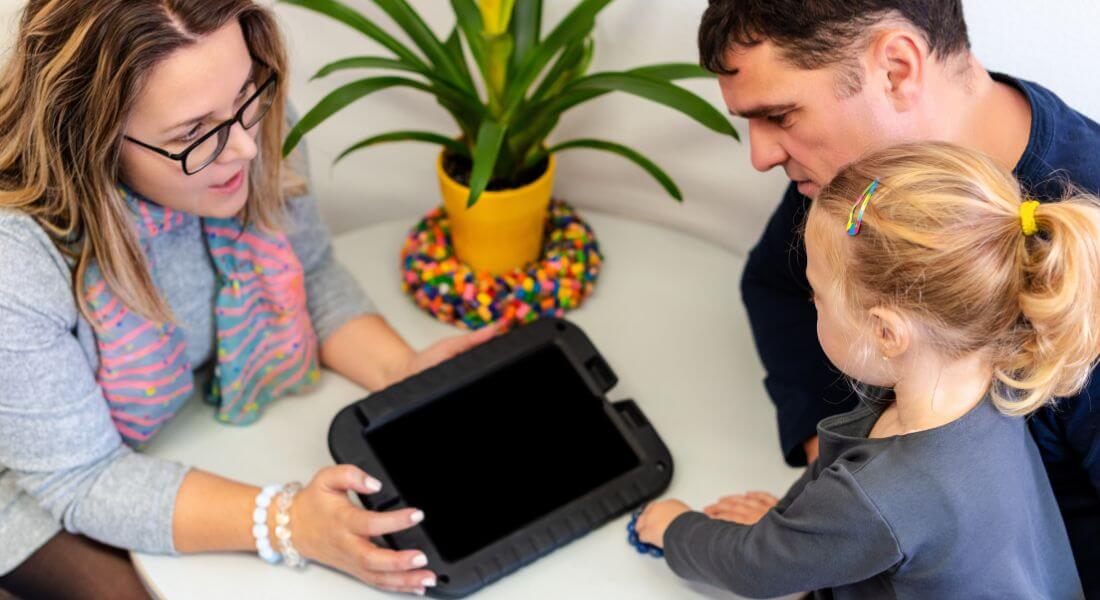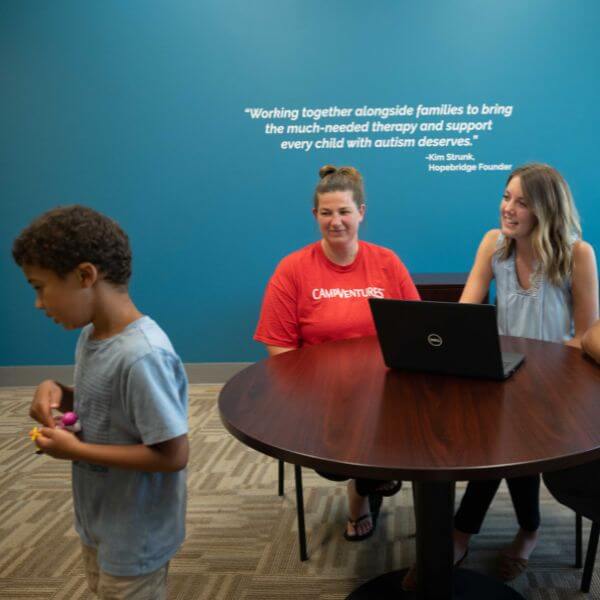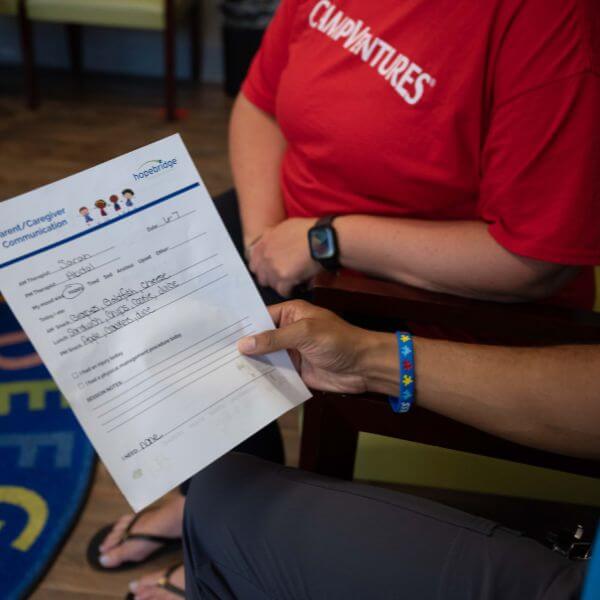How Hopebridge Supports Families Throughout Therapy
December 26, 2024
December 26, 2024

It is more than the children who attend pediatric therapy who are affected by it. This is especially true for autism therapy. Services like applied behavior analysis (ABA therapy), occupational therapy and speech therapy can affect the entire family. This includes primary caregivers, siblings and other family members who care for the child.
At Hopebridge, we consider all of this. We support families from the start and continue all the way through their treatment journey. As part of this, Hopebridge launched family orientation events in many of our centers to inform and prepare caregivers and their children about what to expect with services.
“By providing these opportunities, caregivers can make informed decisions about the level of support they need and how to engage in services,” said Hopebridge Chief Clinical Officer Jana Sarno.
Though it plays an important role, orientation is just one point in time. This first meeting serves as a jumping off point for other conversations.

Hopebridge Care Team and Caregivers work together for a comprehensive therapy experience.
“Our families’ journeys with Hopebridge start with this caregiver activation, where they are welcomed and receive access to important resources, but it doesn’t stop once they head home for the day,” said Hopebridge Chief Science Officer Adam D. Hahs. “Our support ramps up through subsequent guidance meetings, assessments and data to help us anchor what each family needs, versus our team telling them what they need.”
For more insight around the ways Hopebridge provides a holistic view and approach to familial well-being, we connected with our clinical leadership team and other board certified behavior analysts (BCBA). Together, they share how family support is incorporated into our care for the benefit of the child, their progress and the family’s comfort.
At many Hopebridge locations, families who have scheduled autism testing or an ABA evaluation can attend a family orientation event. During this time, caregivers and their children visit the Hopebridge center to get a feel for what it’s all about.
Families receive a group tour of the facility. This includes the gross motor gym, circle time room and one-on-one therapy rooms. Our team members are on site to discuss how we used different spaces, toys and activities within care plans. They will also discuss the skills children can develop in each area.
“It has been great to meet some of the families at orientation before our ABA evaluation. It was nice to be able to say, ‘I’ll see you next week!’ and ease their stress around starting therapy,” said Megan Pullum, a BCBA at Hopebridge in Lebanon, TN.
Caregivers meet the center manager and BCBAs. If a location offers other outpatient services, family members may also connect with an occupational therapist and/or speech-language pathologist. During this time, they get the chance to learn more about Hopebridge services as well as talk one-on-one with clinicians.
During orientation, common topics and questions include:
“Sometimes parents hesitate on pursuing services because they haven’t been away from their kids for periods of time, or maybe when they did, their past experiences weren’t great. It’s a big step forward for many families. This is their baby! It is natural to wonder where they will be dropping them off each day and what they’ll do while they’re there,” said Jana.
“This gives them the chance to learn more about what we do and see how their child interacts with the space and the individuals who will be there with them each day,” Jana followed up.
In locations where we may not offer an orientation, our center teams still work together. They follow these steps to make sure each family is properly onboarded for services.
Orientation is just the beginning. Caregiver guidance plays an important part in therapy for our children, as well as for the well-being of the family overall.
“It’s all about listening and collaboration. Our clinicians use this time to hear from caregivers on what their child is good at or where there are opportunities to grow. This is where our BCBAs find out what is most important to the family, as focusing on those goals and end points helps guide the team on what to do in the middle of the journey to get them there,” said Jana.

Communication is key for Hopebridge families to promote the best therapy outcomes.
Megan shared that caregiver guidance is one of her favorite parts of the job.
“I individualize caregiver training to make sure each child and family gets what they need from it. This might be setting meaningful goals, learning how to navigate the newness of therapy, talking about progress of behaviors at home, or discussing how we can support a child transitioning to school,” said Megan.
Hopebridge further strengthens the effects of caregiver guidance by utilizing specific assessments. These tools help our clinicians engage in meaningful conversations that cover what is beneficial for each family.
For example, the combination of the Child and Family Quality of Life, Second Edition (CFQL-2) and Behavioral Health Index (BHI) provides a good indication of familial well-being throughout the child’s care. These assessments aim to be conversational. They also help identify areas that need extra support or leverage strengths to improve other areas.
Megan notes that the assessments cover deep questions, but having this data helps align everything like a story to determine what’s next and what’s needed during any point in therapy.
In one case, for instance, she noticed that a family’s answers were high in social support. The child’s mother is the sole primary caregiver, however her best friend plays a big role in the child’s life, even helping with transportation. Megan encouraged the mom to lean into this support and bring her friend along to caregiver guidance to learn about ABA and further enhance the opportunities for her child.
All in all, these assessments help our clinicians meet the child and family where they are at in their journey.
“We’re always evolving our practices and use of assessments so we can be more sensitive to the needs of the family and what barriers they are experiencing,” said Adam. “We may not have all of the information, but if they’re willing to share it with us, we can dial in so much more on our support as a function of those extra details.”
If you are looking for more support for your child from a therapy provider that puts in the work to get to know your kid and your family, reach out to us to get scheduled for an evaluation and family orientation. Through high-quality, compassionate care, our clinicians aim to open a world of possibilities for your entire family.
*Informed consent was obtained from the participants in this article. This information should not be captured and reused without express permission from Hopebridge, LLC.